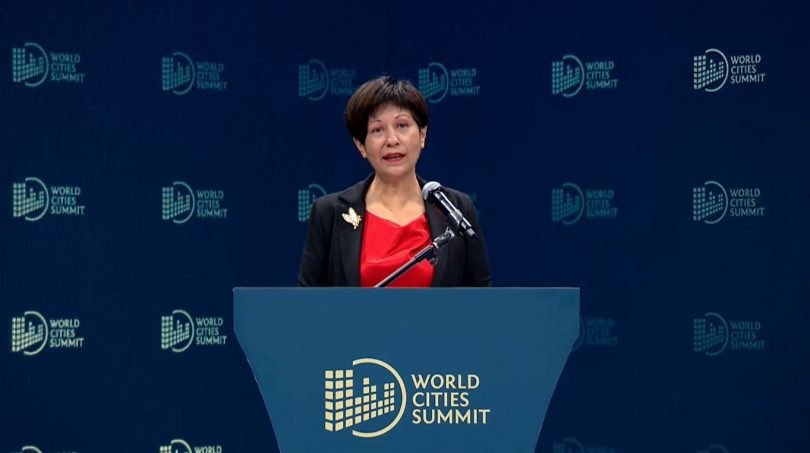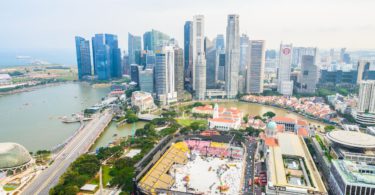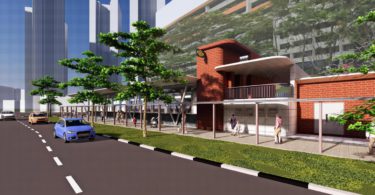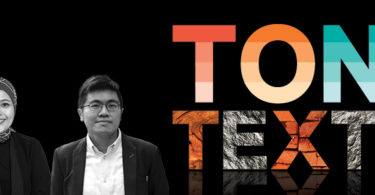Summary of keynote speech by Indranee Rajah, Second Minister for Finance and Second Minister for National Development, Singapore
In the face of unprecedented disruptions, resilience in urban infrastructure and systems have to be increased, for example by building in adaptability and flexibility. Cities must lead collective global action for a sustainable future to ensure a healthy planet for both current and future generations. This is particularly important as COVID-19 has hit the disadvantaged and the impoverished the most. Any vision for a sustainable future must also be equitable as worsening inequality will only compromise the sought-after resilience.
Taking a long-term view and investing in urban infrastructure
For cities, taking a long-term view and investing in infrastructure will be the bedrock for this vision of a more resilient future. The question is then what kind of infrastructure we need and how we fund this as COVID-19 has strained national and city budgets. Governments spends heavily on critical priorities such as ramping up public health systems and extending financial assistance to those whose livelihoods have been devastated by the pandemic.
That these priorities have taken precedence over long-term infrastructural development is understandable given the current circumstances, but as the world recovers, infrastructural development must be a priority. According to the Global Infrastructure Outlook, a G20 initiative, the infrastructure investment gap globally will widen to at least US$15 trillion by 2040. Developing nations in particular were already facing severe infrastructure gaps prior to COVID-19. And many developed cities need to upgrade existing infrastructure to remain economically vibrant—an increasingly vital task as the world recovers from the pandemic.
Infrastructure investments are a key driver of economic recovery and long-term growth, and critical for the provision of basic needs—energy, water, waste disposal, transportation and so on—all of which cities and people depend on.
Financing challenges: Working with the private sector
Strained budgets mean that governments can no longer do this alone; hence partnerships with the private sector are needed. The World Bank has estimated that 85 per cent of the investment gap in sustainable infrastructure will have to be borne by the private sector. Therefore, Public-Private Partnerships, or PPPs—where private investors partner with governments and share the risks and costs associated with infrastructure development—are one option that cities can pursue.
Aside from cost savings, PPPs can confer other benefits, such as injecting fresh ideas and greater innovation, and reducing project completion times. In Singapore, we have for many years harnessed the drive of the private sector to build and improve our city—the government and private enterprise working hand-in-hand. In some cities, greater involvement of the private sector in urban development does give rise to legitimate concerns; for example, about developers putting profit ahead of public interest. But this need not be the case, if governments work with the private sector to design and structure their partnerships well.
For example, Singapore’s land use planning and conservation agency, that is the Urban Redevelopment Authority (URA), carefully stipulates requirements on publicly-accessible space and greenery provision through various schemes. These include the Privately-Owned Public Spaces (POPS) design guidelines and the Landscaping for Urban Spaces and High-Rises (LUSH) scheme.
This approach sees government providing the planning parameters, while working with the private sector to operationalise them. This is just one way government can guide and work with the private sector to develop important infrastructure, while still meeting urban planning objectives.
Sustainable infrastructure for a Green future
In the face of climate change and pandemics, it is more important than ever that cities invest in a sustainable future for the world. Meaningful progress has been made, but much remains to be done. Investing in sustainable infrastructure is no longer just about achieving environmental outcomes but mist also factor in social, public health, economic and financial concerns. Ensuring sustainability in all these inter-connected areas enhances our overall resilience in times of disruption.
Climate change is the collective challenge of our generation, and it will impact the world environmentally, socially and economically. Other disruptions include growing inequality, ageing populations, pandemics and technological disruptions which will exacerbate these impacts. Infrastructure that integrates these considerations will not only boost resilience, it will in tandem also enhance liveability, help create jobs, and drive inclusive growth.
This is why Singapore believes strongly in the value of such sustainable infrastructure. Some examples include the upcoming public housing towns called Tengah—located in western Singapore. Developed by our Housing and Development Board (HDB), the town will integrate nature and the community so that residents can enjoy nature right at their doorstep. Tengah will have a ‘car-free’ town centre where walking and cycling will take precedence, as well as spaces for community urban farming, and smart features in homes and common areas to save energy.
In addition, sustainable infrastructure does not have to be limited only to buildings. National Parks Board, NParks, will transform Singapore into a City in Nature—weaving nature into the urban fabric and strengthen resilience against climate change. One of the key steps it is taking is to work with the community to plant one million more trees between 2020 and 2030, under the OneMillionTrees Movement, which so far planted more than 210,000 trees across Singapore since last year.
Singapore is also integrating circularity into the urban systems, for example by cutting waste and boosting renewable energy production, in line with the Zero Waste Masterplan which was published two years ago. Last year, more than half of the waste was recycled, and most of the rest is incinerated—generating electricity while doing so. Only the resultant ash and non-incinerable waste are landfilled. Treated incineration ash is used as an alternative construction material for roads or non-structural concrete.
Singapore is also ramping up on our use of renewable energy—solar in particular—as it is a key part of the international climate action commitments and will help to boost the city resilience against unpredictable fossil-fuel energy supply or price shocks. Under the SolarNova programme, Singapore’s Housing and Development Board (HDB) is jointly leading a whole-of-government effort with Economic Development Board to aggregate demand for photovoltaic systems across government agencies.
The aim is to achieve better economies of scale, lower costs, and make solar energy even more viable. HDB plans to install solar panels on 70 per cent of its public housing blocks by 2030. The solar energy generated will power common services such as lifts, lights and water pumps, and any excess energy will be channelled to our national grid.
Equitable infrastructure for an inclusive, liveable future
Sustainable infrastructure delivers clear benefits to the environment and impacts communities in a positive way. When the benefits of clean air, clean water and low pollution are made available to all, this boosts public health and is an important part of a city’s inclusive growth.
In Singapore, we clearly understand that infrastructure development needs to produce equitable outcomes. Cities must invest in a recovery that does not leave people behind. Around the world, the people hardest hit by COVID-19 live in crammed conditions with inadequate sanitation, which has worsened the spread of the virus. The pandemic has driven home the importance of public health infrastructure to ensure hygiene, sanitation and access to clean water and waste disposal. These are basic infrastructural needs.
Urban infrastructure and systems such as public transport, healthcare, parks, recreational amenities, as well as digital and internet access, are examples of basic infrastructure that cities must not neglect. Widening access to these is critical to reducing inequality.
Singapore’s national strategies in these areas have been carefully thought through to ensure this. By 2030, Singapore aims for every household to be within a 10-minute walk from a park, and rail network will be expanded from 230 to 360 kilometres to improve public transport access across the island. In the area of digitalisation, digital literacy among the elderly is boosted through programmes teaching them how to make video calls, search for information online, and protect themselves from online scams.
Cities need infrastructure that is resilient not only to climate change and pandemics, but which also strengthens social resilience by reducing inequality because when these disruptions and shocks occur, it is the most vulnerable who bear the brunt of it.
Conclusion
The important priorities are partnering the private sector for infrastructure investment; pursuing a sustainable vision; ensuring a recovery that leaves no one behind. These can be easily seen as separate agendas, but are in fact all closely intertwined. To be resilient in the face of an uncertain future with unpredictable disruptions, cities need to invest in infrastructure that is both sustainable and equitable. Cities that succeed in doing so will not only be able to survive but to thrive.
– Construction+ Online











